THE RANCHU GOLDFISH
Hailed as the King of Goldfish by the Japanese, the Ranchu is highly valued for their charm and rarity. They are one of the oldest species of Goldfishes, with their ancestors being brought to Japan from China in the 1500s. Afterward, beginning in the late 1800s of the Meiji period, their appearance swam closer and closer to that of the Ranchu we see today.
Ranchus come in a range of colorful patterns and are known to have metallic scales, short and stubby bodies, and in the absence of a dorsal fin, a wen – a fleshy outgrowth on top of their head that gives them an egg-shaped appearance.
When well-cared for, Ranchus have the potential to grow up to thirteen centimeters and live up to ten to fifteen years. And with those facts in mind, it’s only fitting that we declare… long live the king – or queen!
SCIENTIFIC CLASSIFICATION
Kingdom – Animalia
Phylum – Chordata
Class – Actinopterygii
Order – Cypriniformes
Family – Cyprinidae
Genus – Carassius
Species – Carassius auratus auratus
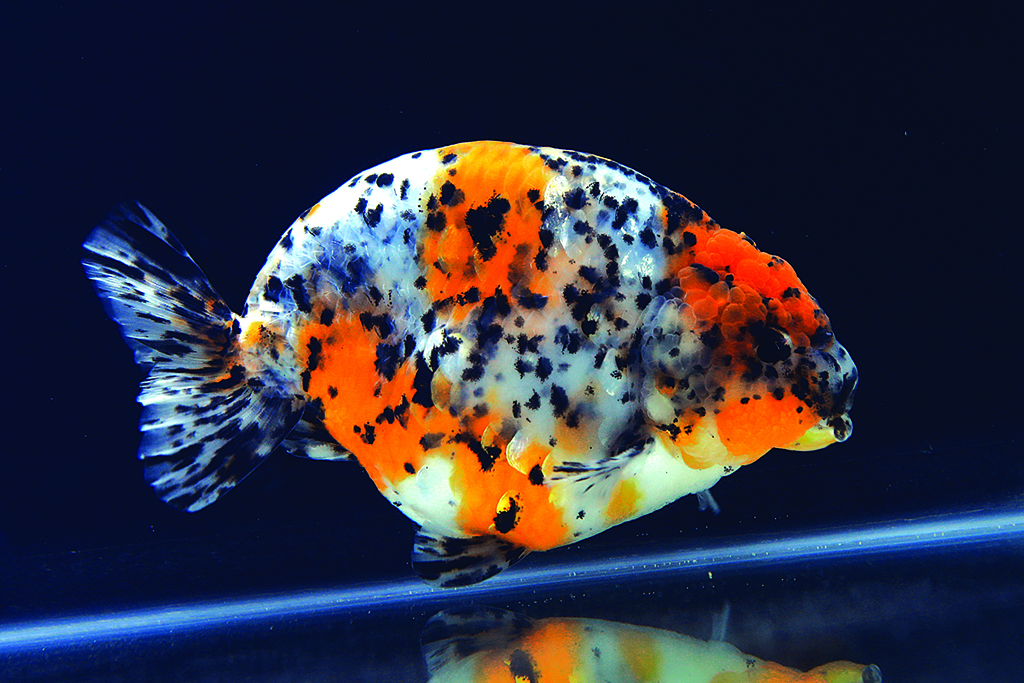
A MELTING POT OF GOLD
There are over 200 types of Goldfish in the world, with some of the most popular being Ranchus, Orandas, Ryukins, and Demekins. We asked Gerald of Stungun Aquatics to explain the differences and similarities among these species.

Gerald expressed that although Goldfishes have different shape and size, all these species are slow swimmers. “Another similar trait [they have is that their] fancy body shape makes them prone to swim bladder disorders, which cause them to swim upside down. [This is] mostly caused by overfeeding or poorly maintained water parameters.”
RANCHU, I CHOOSE YOU
We talked to Gerald about what it’s like living with Goldfishes, how he started caring for them, and why his companion Ranchu, lovingly called Bibi Fat, became his favorite.
Question: How did you come to care for Goldfishes?
Answer: I started when I was around five years [old].
I remember back then during Sundays, there is this old manong selling assorted Fishes outside the church and my grandma would buy me some, and we would put them in fishbowls when we got home. I remember feeding [the Fish] pandesal.
After a few years, my parents bought me an aquarium set from Ali Mall in Cubao, and it never stopped from there. I, together with my siblings Nancy andRosemarie, now run Stungun Aquatics and Stungun Ornamental Fish, Inc.
Q: Of all the Goldfishes under your care, who is the one who has made the most impact on you?
A: My favorite is the large white/ red Ranchu named Bibi Fat. I named her after my youngest sister Nancy whom I was so fond of when we were still young.
This Goldfish is chubby and has big cheeks, just like my sister. Watching this beauty swim erases all my stress.
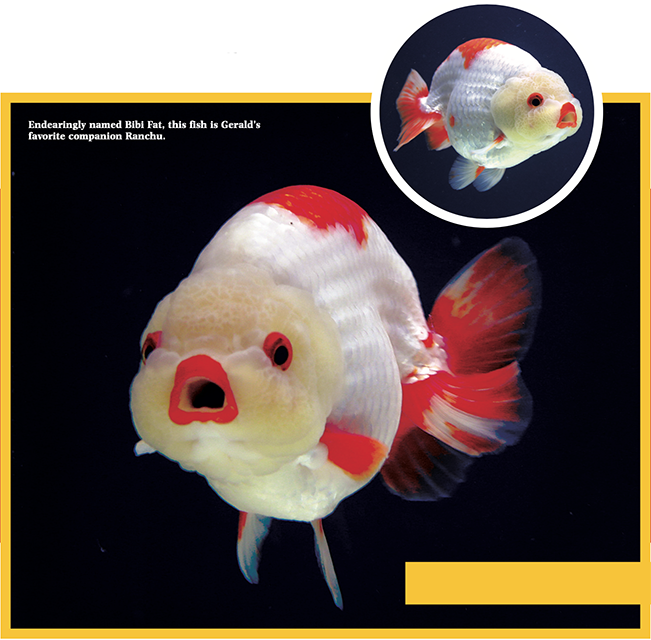
IN TROUBLED WATERS
Caring for Goldfishes is not all rainbows and Butterflies as some might think. There are a lot of factors that one needs to consider to ensure that the Fishes’ needs are being met.
Gerald shared some of the challenges faced by these delicate Fishes.
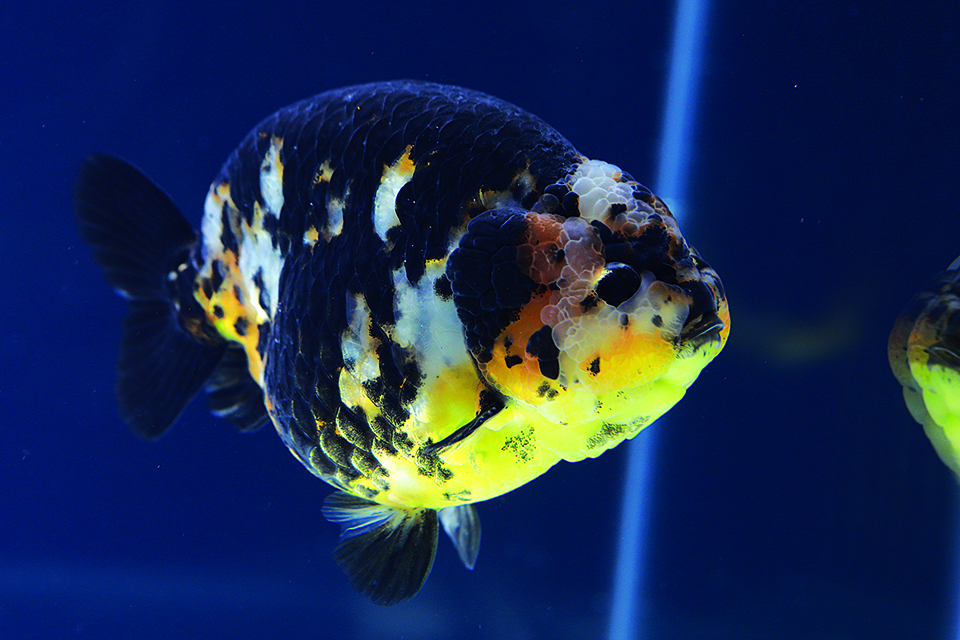
Q: Are Goldfishes native to the Philippines? What would happen if one were to release them into our bodies of water?
A: Goldfishes were first developed in imperial China more than a thousand years ago. Through hundreds and hundreds of years of selective breeding, they were developed into peculiar body types and finnage which make them unable to thrive and defend themselves in the wild, with the exception of some species like Shubunkin and Comets, which are more like their ancestors.
I believe they can hardly survive or thrive in the wild, especially in our local bodies of water, [where you predominantly find] Tilapia and Catfish. Goldfishes will be very easy prey for them.
Q: Have you ever seen a Goldfish’s scales turn black? What does it mean when this happens?
A: There are Goldfishes that start with bronze or black coloration when still young that molts into orange or different combination color patterns as they grow. This is normal.
Sometimes, food and the environment can trigger this, but this is mostly genetic.
There are also instances when suddenly, you will see dark dots [on the] scales of the Goldfish’s body. This is a sign of bacterial infection, which must be treated with antibiotics immediately or they will die.
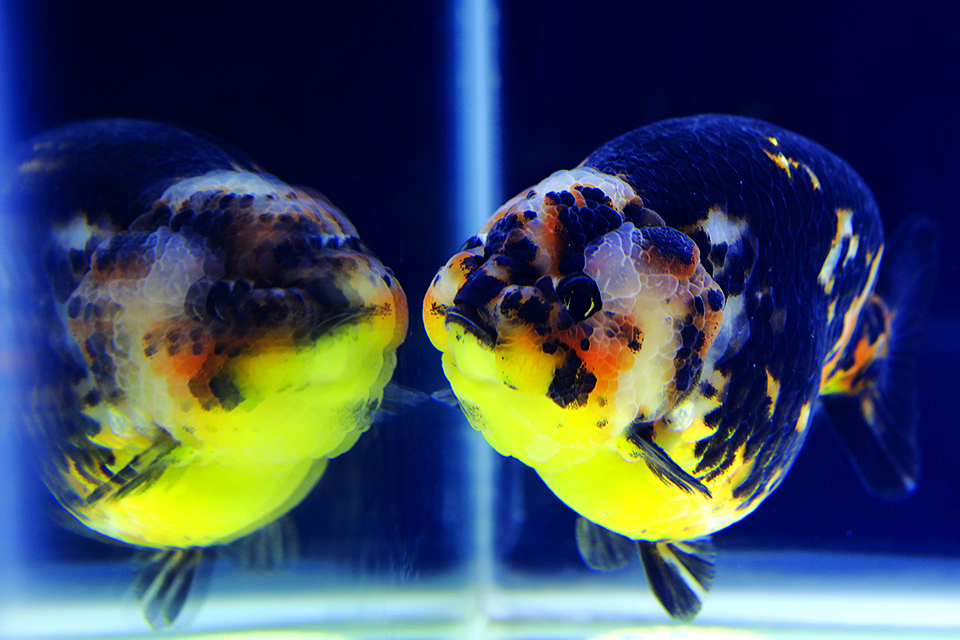
Q: In your opinion, how do Goldfishes differ from other Fishes?
A: Unlike most domestic Fish, the Goldfish that we see today, through countless generations of selective breeding, has turned into a species heavily dependent on human care for survival.
They are easy prey to even the smallest of predators. They can hardly survive in the wild due to their slow swimming speed caused by their uniquely developed body structure and finnage.
Q: What’s the most challenging part about caring for Goldfishes?
A: The most challenging part of caring for Goldfish is keeping them healthy through proper care and maintenance.
Goldfish are prone to different kinds of bacterial infection and parasitic infection. They are not a very hardy fish. One should know all the symptoms and early signs of diseases.
Aside from physical manifestations of problems, one should be observant of their behavior and swimming patterns as these could also be signs of a problem the fish is experiencing.
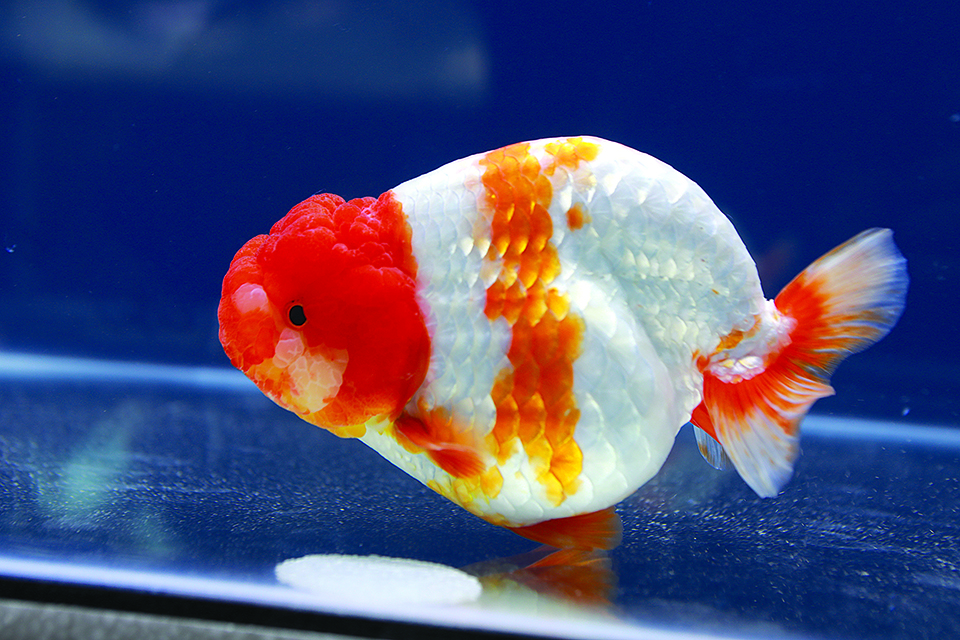
SWIMMING AGAINST THE CURRENT
Due to health concerns and the overly dependent nature of Goldfishes, some Fish carers question whether it’s ethical to keep producing selectively overbred Fishes. Several online forums house discussions on the matter.
On a forum at KokosGoldfish.InvisionZone.com, user Azlaier raised their concerns on a post which they titled, On the Ethics of Fancy Goldfish and Selective Breeding:
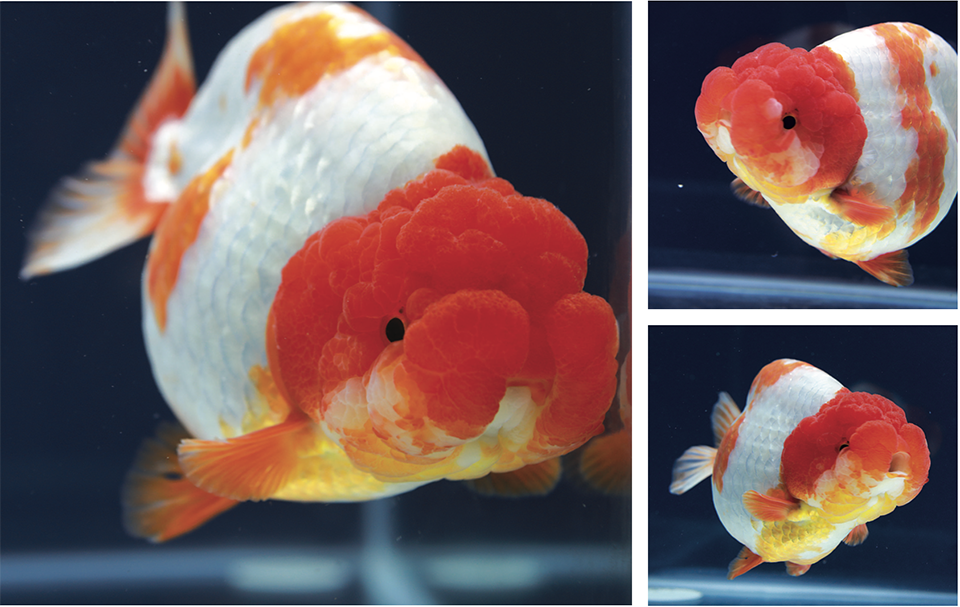
When looking at some of these videos/pictures of peoples’ gigantic Ryukins with fins that are too small and bodies that are too large (to the point where they obviously struggle to move themselves around), these Orandas, Ranchus, and Lionheads with wens so big they look to be smothered to where they can’t see or breathe properly, and their bodies so egg-shaped their organs look to be crushed, and these bubble-eyes and Celestials who can hardly see and are the victims of most tank bullies, and, not to mention, who have to carry around these annoying, delicate sacks under their eyes that basically inhibit their livelihood, it makes me wonder if perhaps we’re being too vain to even consider whether or not this is ethical or even healthy.
Today’s Fancy Goldfish are constantly having floating and constipation problems, and most can’t deal with aquariums that are more than 40 inches deep because their swim bladders just can’t handle it. Many females are dying during mating season because their ovaries end up crushing their organs, or simply burst due to lack of room for eggs. Many Telescopes and Moors are blind, and many Vieltail’s fins rip and get injured. We spend so much time trying to put temporary bandaids on these problems, but perhaps the real issue is that fancy goldfish have been mutated far beyond what their species can handle, beyond what Mother Nature would have allowed, to the point of a poor quality of life.
Sure, Ryukins and Vieltails who can’t swim properly, Telescopes, Celestials, Bubble-eyes, Orandas, Ranchus, and Lionheads who can’t see properly, and any egg-shaped fish whose organs can’t grow properly might be “pretty,” but they are also highly prone to health issues, and look to be very uncomfortable.
I’m not making this topic to bash anyone or his or her decision to buy highly-mutated goldfish, I’m simply curious as to other peoples’ opinions on this topic. What should we do to fix
this problem? Is it even a problem? Should we, perhaps, pay more attention to which fish we buy, even though they may be aesthetically-pleasing?
On another forum at FishLore.com, user crowntailbetta asked, “Do you personally think it is unethical to keep fancy goldfish?” They went on to say:
Fancy goldfish have long been bred to have severely curved spines and other deformities to make them attractive and more compact, due to their abnormalities they are prone to swim bladder disease as well as general discomfort. There [sic] bodies are no longer streamlined and they have difficulty swimming. I am curious to see people’s opinions of keeping, breeding, and buying “fancy” goldfish. Do you think it is cruel?
The responses on these forums have been mixed, with some defending breeding and others agreeing that there’s cruelty involved, while a few others do not want to support the industry at all.
Some have also concluded that it’s all about personal choice, while others said that it would be better to adopt in the future, and to keep providing the best care for those that are already in their care, moving forward.
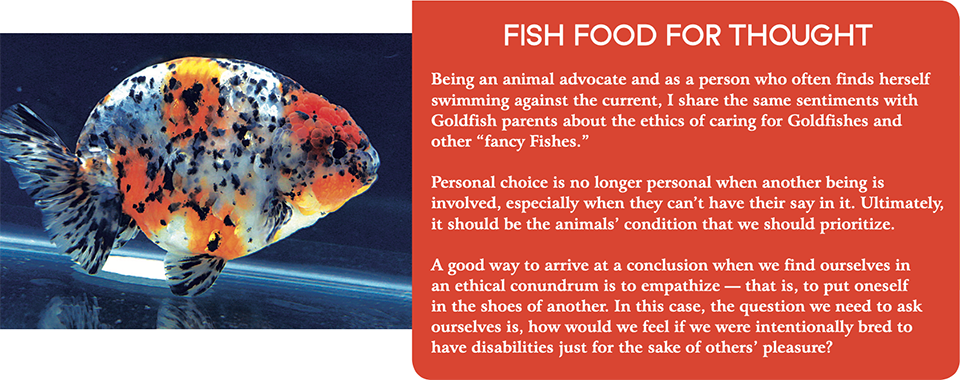
AS GOOD AS GOLD
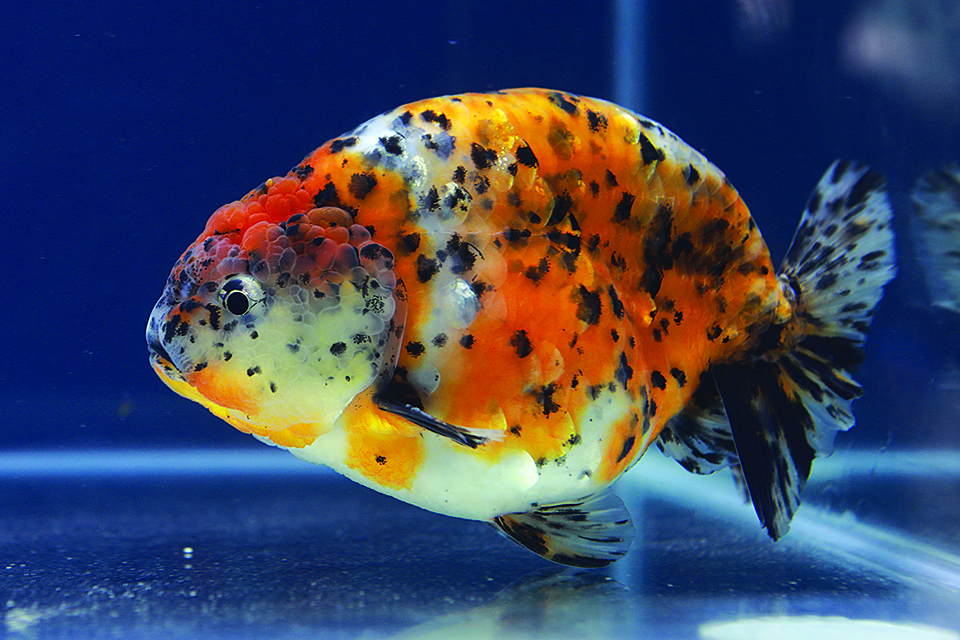
Though caring for Goldfishes brings challenges, one can deem it worth it as living with them has rewarding moments.
We asked Gerald to share these moments with us, as well as other things that future Goldfish carers should expect when they bring home their new companion.
Q: How would you describe your favorite Goldfish’s personality?
A: Goldfishes can be very endearing. I noticed that they recognize you and will always approach you when they see you, asking for food. They are the easy-going type, just thinking of what to eat next.
Q: What’s the best part about being your Goldfish’s human companion?
A: The best part of taking care of Goldfishes is watching them feed with their voracious appetite. Once they sense its feeding time, they all go towards you, watching for whatever food they can gobble.
Q: What kind of person do you think would best be able to care for them?
A: Goldfish is one of the most common and most popular aquarium fish out there, but they are not for newbies.
The best person to take care of them is someone who is well- versed in aquarium keeping and treatment of fish disease. These fishes easily die in the care of the uninitiated.
Q: What’s one thing you would like the world to know about Goldfishes, and also about your Goldfish in particular?
A: [There are] two things. First one is that Goldfishes love new, unchlorinated water. Even if you have good filtration, nothing beats fresh clean water.
Second, sunlight is the best color enhancer. It helps bring out the best color in Goldfishes. That’s why when I groom my Goldfish, I place them in outdoor ponds where sunshine can easily reach them at least four to six hours per day.
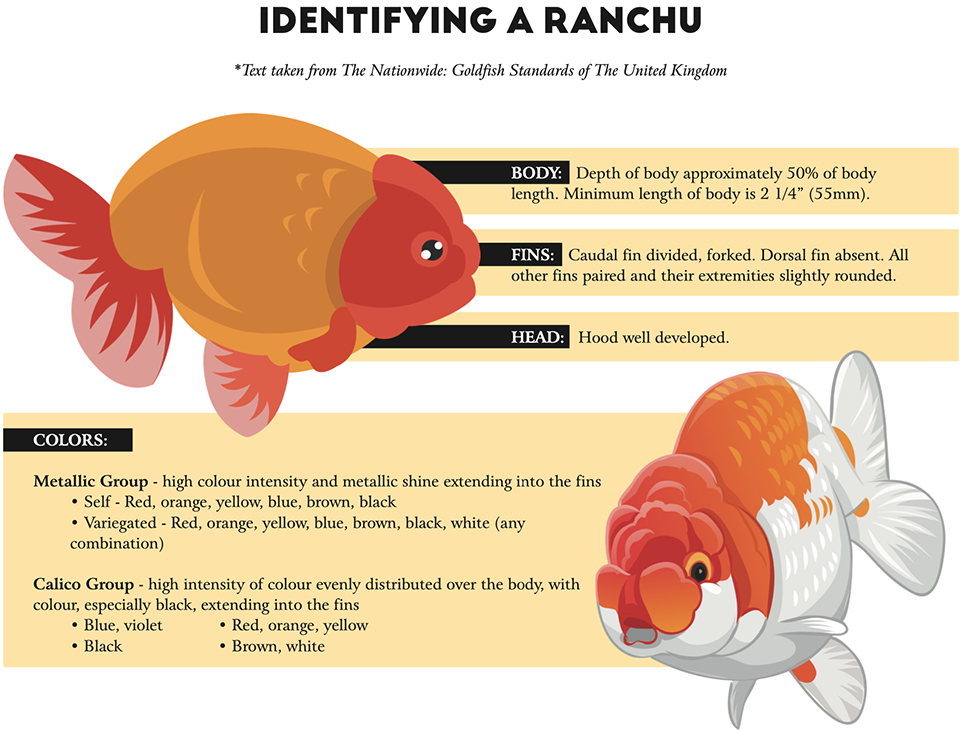



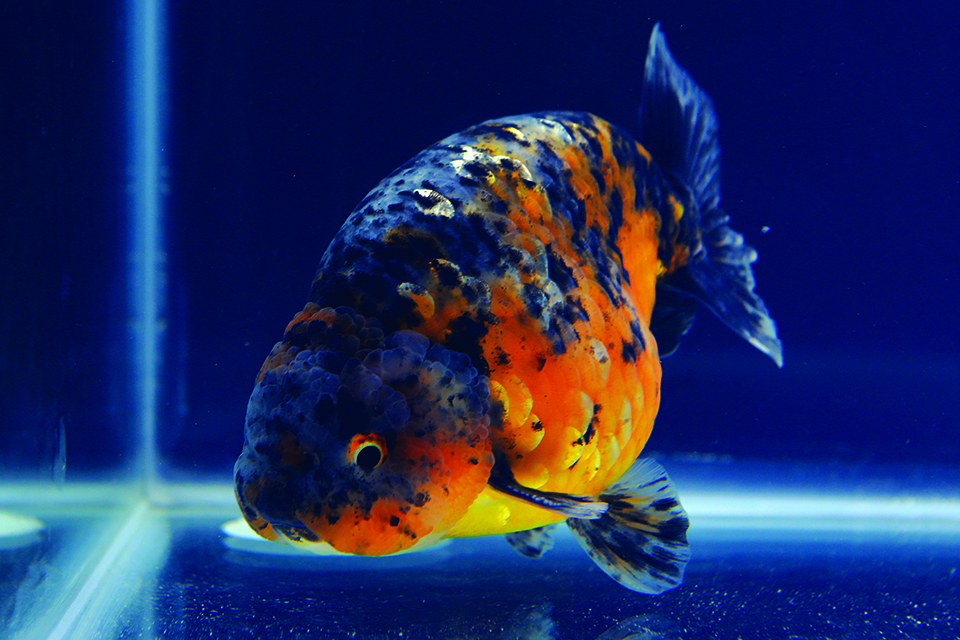
ON STAYING GOLDEN
Any Fish parent would find their world more colorful when they live with Goldfishes. They are intelligent, playful, and social animals who deserve to be treasured and loved, not only for their prized status, but also for their individual personalities.
These are more than enough proof that all that glitters is not gold. Sometimes, it’s just a Goldfish.







